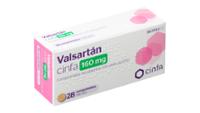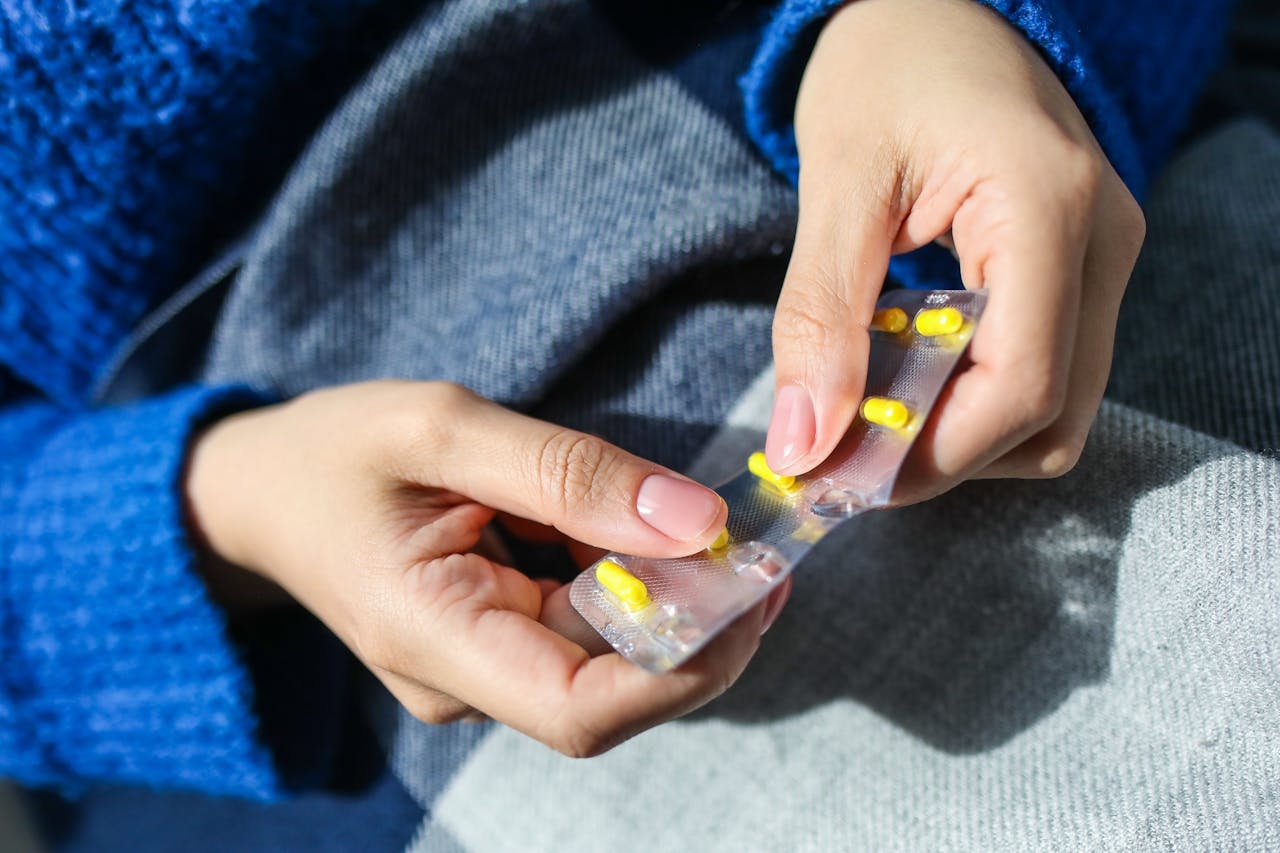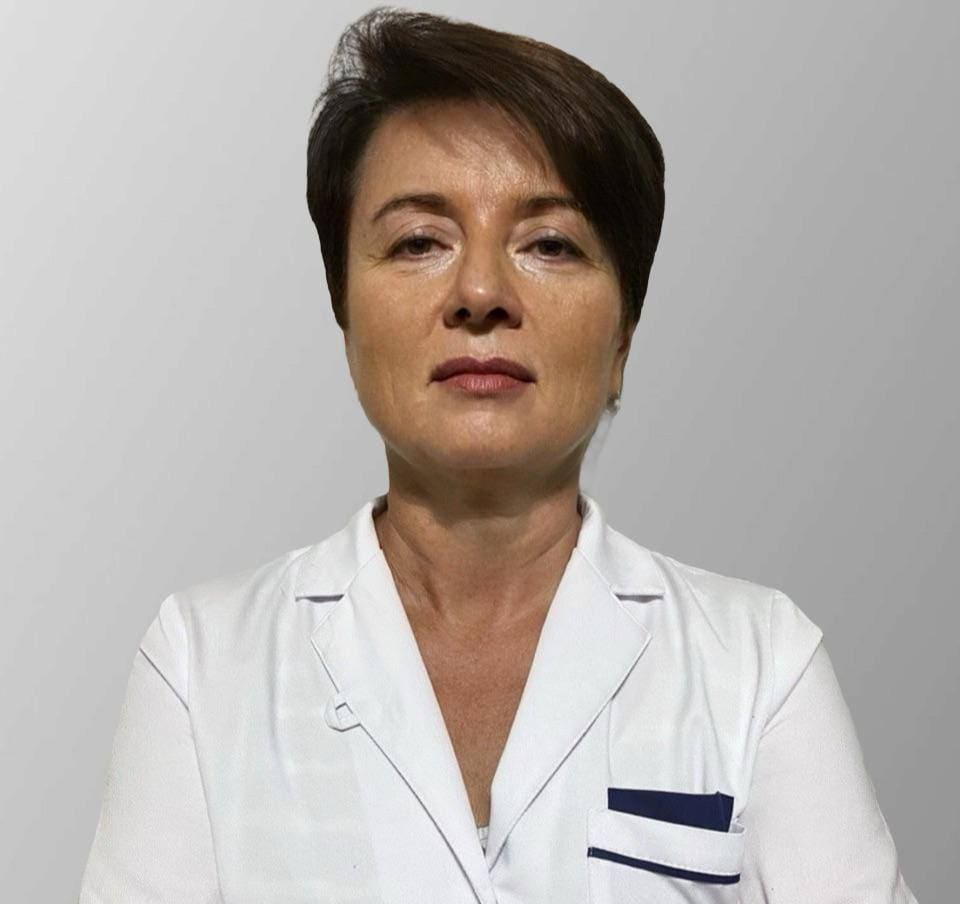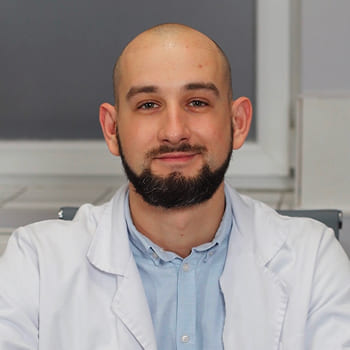

Valsartan cinfa 160 mg comprimidos recubiertos con pelicula efg


Інструкція із застосування Valsartan cinfa 160 mg comprimidos recubiertos con pelicula efg
Введение
Противопоказания: информация для пользователя
Вальсартан цинфа 160 мг таблетки покрытые пленочной оболочкой EFG
Прочитайте весь этот лист информации внимательно, прежде чем начать принимать этот препарат, поскольку он содержит важную информацию для вас.
- Сохраните этот лист информации, поскольку вам может понадобиться прочитать его снова.
- Если у вас есть какие-либо вопросы, обратитесь к вашему врачу или фармацевту.
- Этот препарат был назначен только вам, и вы не должны давать его другим людям, даже если у них есть те же симптомы, что и у вас, поскольку это может навредить им.
- Если у вас появляются побочные эффекты, обратитесь к вашему врачу или фармацевту, даже если это побочные эффекты, которые не указаны в этом листе информации. См. Раздел 4.
1.Что такое Вальсартан цинфа и для чего он используется
2.Что нужно знать перед началом приема Вальсартана цинфа
3.Как принимать Вальсартан цинфа
4.Возможные побочные эффекты
5Сохранение Вальсартана цинфа
6.Содержимое упаковки и дополнительная информация
1. Что такое Вальсартан Цинфа и для чего он используется
Вальсартан Цинфасодержит активное вещество: Вальсартаниотноситсяк классу препаратов, известным как антагонисты рецепторов аγγиотензина II, которые помогают контролировать высокое артериальное давление. Актиенцин II — это вещество, вырабатываемое организмом, которое заставляет кровеносные сосуды сужаться, что приводит к увеличению артериального давления. Вальсартан действует, блокируя эффект актиенцин II. В результате кровеносные сосуды расслабляются, и артериальное давление снижается.
Вальсартан Цинфаможет использоваться для трех различных заболеваний:
- Для лечения высокого артериального давления у взрослых и у детей и подростков в возрастеот 6 лет и старше до 18 лет.
Высокое артериальное давление увеличивает нагрузку на сердце и артерии. Если оно не лечится, может нанести вред кровеносным сосудам мозга, сердца и почек и может привести к инсульту, сердечной недостаточности или почечной недостаточности. Высокое артериальное давление увеличивает риск сердечных приступов. Снижение артериального давления до нормальных значений снижает риск развития этих заболеваний.
- Для лечения взрослых пациентов после недавнего сердечного приступа(инфаркта миокарда).«Недавно» означает здесь между 12 часами и 10 днями,
- Для лечения симптоматической сердечной недостаточности у взрослых пациентов.Вальсартан используется, когда невозможно использовать группу препаратов, называемых ингибиторами конвертирующего фермента аγγиотензина (ИКФА), (лекарство для лечения сердечной недостаточности), или может использоваться в дополнение к ИКФА, когда невозможно использовать другие препараты для лечения сердечной недостаточности.
Среди симптомов сердечной недостаточности — затруднение дыхания и отек ног и нижних конечностей из-за отека. Это происходит потому, что сердечный мышца не может выбрасывать кровь с достаточно большой силой, чтобы обеспечить всю кровь, необходимую для тела.
2. Что нужно знать перед началом приема валсартана цинфа
Не принимайте valsartán cinfa
- если выаллергичнына valsartán или на любые другие компоненты этого препарата (указаны в разделе 6).
- если у вастяжёлая болезнь печени.
- если выбеременны более 3 месяцев(лучше избегать valsartán в первые месяцы беременности - см. раздел "Беременность").
- если у вас диабет или почечная недостаточность и вы принимаете препарат для снижения артериального давления, содержащий алискирен.
Если у вас есть одна из вышеуказанных проблем, сообщите своему врачу и не принимайте valsartán
Предупреждения и предостережения
Советуйтеся с вашим врачом или фармацевтом перед началом приема valsartán cinfa.
- если у вас болезнь печени.
- если у вас тяжелая болезнь почек или если вы проходите диализ.
- если у вас сужение почечной артерии.
- если вы недавно перенесли пересадку почки (получили новую почку).
- если у вас тяжелая сердечная болезнь, отличная от сердечной недостаточности или инфаркта миокарда.
- если у вас случилась отёк языка и лица, вызванная аллергией, называемой ангиедемой, когда вы принимали другие препараты (включая ИЭКС), сообщите своему врачу. Если у вас эти симптомы при приеме valsartán, немедленно прекратите прием valsartán и не принимайте его снова. См. также раздел "Возможные побочные эффекты".
- если вы принимаете препараты, увеличивающие количество калия в крови. Среди них: добавки калия или заменители соли, содержащие калий, препараты, экономящие калий и гепарин. Возможно, потребуется регулярно контролировать количество калия в крови.
- если у вас алдостеронизм, болезнь, при которой надпочечники вырабатывают слишком много гормона алдостерона. В этом случае не рекомендуется принимать valsartán.
- если вы потеряли много жидкости (дегидратация) из-за диареи, рвоты или высоких доз диуретиков (препаратов, увеличивающих выделение мочи).
- если вы принимаете один из следующих препаратов для лечения гипертонии (высокого артериального давления):
- ингибиторы конвертирующего фермента (ИЭКС) (например, эналаприл, лизиноприл, рамиприл), особенно если у вас проблемы с почками, связанные с диабетом.
- алискирен
- если вы принимаете ИЭКС вместе с другими препаратами для лечения сердечной недостаточности, известными как антагонисты минералокортикоидных рецепторов (АРМ) (например, эспиронолактон, эплеренон) или бета-блокаторы (например, метопролол).
Советуйтеся с вашим врачом, если у вас боли в животе, тошнота, рвота или диарея после приема valsartán. Врач решит, следует ли продолжать лечение. Не переставайте принимать valsartán без консультации с врачом.
Возможно, ваш врач будет контролировать функцию почек, артериальное давление и уровни электролитов (например, калия) в крови с регулярными интервалами.
См. также раздел "Не принимайте valsartán cinfa".
Обратите внимание врача, если вы думаете, что вы (или можете быть) беременны. valsartán не рекомендуется в начале беременности, и не следует принимать его, если вы беременны более 3 месяцев, поскольку это может нанести вред вашему ребёнку, если вы принимаете его в этот период (см. раздел "Беременность").
Другие препараты и valsartán cinfa
Советуйтеся с вашим врачом или фармацевтом, если вы принимаете, недавно принимали или можете принять другой препарат.
Влияние лечения valsartán может быть изменено, если вы принимаете его вместе с определёнными препаратами. Возможно, ваш врач должен изменить дозу и/или принять другие меры предосторожности или, в некоторых случаях, прекратить лечение одного из препаратов. Это относится как к препаратам, отпускаемым по рецепту, так и к препаратам, отпускаемым без рецепта, особенно:
- другие препараты, снижающие артериальное давление, особеннодиуретики (препараты, увеличивающие выделение мочи), ИЭКС (например, эналаприл, лизиноприл и т. д.) или алискирен (см. также разделы "Не принимайте valsartán cinfa" и "Предупреждения и предостережения").
- препараты, увеличивающие количество калия в крови. Среди них: добавки калия или заменители соли, содержащие калий, препараты, экономящие калий и гепарин.
- некоторые препараты для лечения боли, называемые нестероидными противовоспалительными препаратами (НПВП).
- некоторые антибиотики (группа рифампицина), препарат, используемый для защиты от отторжения после пересадки (циклоспорин) или препарат против ВИЧ/СПИДа (ритонавир). Эти препараты могут усилить действие valsartán.
- литий, препарат, используемый для лечения определенных психиатрических заболеваний.
Кроме того:
- если вы проходите лечение после инфаркта миокарда, не рекомендуется комбинировать valsartán с ИЭКС (препаратом для лечения инфаркта миокарда).
- если вы проходите лечение для сердечной недостаточности, не рекомендуется комбинировать valsartán с ИЭКС и другими препаратами для лечения сердечной недостаточности, известными как антагонисты минералокортикоидных рецепторов (АРМ) (например, эспиронолактон, эплеренон) или бета-блокаторы (например, метопролол).
Принятие valsartán cinfa с пищей и напитками
Вы можете принимать valsartán с или без пищи.
Беременность и грудное вскармливание
Если вы беременны или на грудном вскармливании, или если вы думаете, что вы (или можете быть) беременны, советуйтеся с вашим врачом или фармацевтом перед использованием этого препарата.
- Обратите внимание врача, если вы беременны (или если вы думаете, что вы можете быть беременны).Врач обычно порекомендует вам прекратить принимать valsartánдо беременности или как можно скорее после того, как вы узнаете, что вы беременны, и порекомендует вам принять другой препарат вместо valsartán. valsartán не рекомендуется в начале беременности, и в любом случае не следует принимать его после третьего месяца беременности, поскольку это может нанести вред вашему ребёнку, если вы принимаете его в этот период (см. раздел "Беременность").
- Обратите внимание врача, если вы на грудном вскармливании или собираетесь начать грудное вскармливание.Не рекомендуется использовать valsartán во время грудного вскармливания, и ваш врач выберет другой препарат для вас, если вы хотите грудное вскармливание, особенно если ваш ребёнок новорожденный или преждевременно рождённый.
Вождение автомобиля и использование машин
Перед вождением автомобиля, использованием инструментов или управлением машинами или выполнением других задач, требующих концентрации внимания, убедитесь, что вы знаете, как valsartán влияет на вас. Как и многие другие препараты, используемые для лечения гипертонии, valsartán может вызывать в редких случаях головокружение и влиять на способность концентрироваться.
valsartán cinfa содержит лактозу.
Если ваш врач сказал вам, что у вас есть непереносимость определенных сахаров, советуйтесь с ним перед принятием этого препарата.
valsartán cinfa содержит сорбитол.
Этот препарат содержит 18,5 мг сорбитола в каждой таблетке.
valsartán cinfa содержит натрий.
Этот препарат содержит менее 23 мг натрия (1 ммоль) в каждой таблетке; это, по сути, "без натрия".
3. Как принимать валсартан цинфа
Следуйте точно указаниям по применению этого препарата, указанным вашим врачом или фармацевтом. В случае сомнений обратитесь снова к вашему врачу или фармацевту.
Люди с высоким кровяным давлением часто не замечают никаких признаков заболевания; многие чувствуют себя нормально. Это делает очень важным посещение встреч с врачом, даже если вы чувствуете себя хорошо.
Взрослые пациенты с высоким кровяным давлением:Рекомендуемая доза составляет 80мгв день. В некоторых случаях ваш врач может назначить более высокие дозы (например, 160 мг или 320 мг). Также может быть назначено комбинированное лечение с другим препаратом (например, диуретиком).
Использование у детей и подростков (от 6 доменее 18лет) с высоким кровяным давлением
В пациентах, весящих менее 35кг, рекомендованная дозаявляется 40мгvalsartán в день.
В пациентах, весящих 35кг или более, начальная рекомендованнаядозаявляется 80мгvalsartán в день.
В некоторых случаях ваш врач может назначить более высокие дозы (доза может быть увеличена до160 мг и до максимальной дозы 320 мг).
Взрослые пациенты после недавнего сердечного приступа:После сердечного приступа лечение обычно начинается через 12часов, обычно с низкой дозы 20 мг, принимаемой дважды в день. Доза 20мгполучается путем разделения таблетки 40 мг. Врач увеличит эту дозу постепенно в течение нескольких недель до максимальной дозы 160 мг дважды в день. Финальная доза зависит от вашей индивидуальной толерантности.Valsartán можно принимать в сочетании с другими препаратами для лечения сердечного приступа, и ваш врач решит, какой препарат наиболее подходящий для вас.
Взрослые пациенты с сердечной недостаточностью:Лечение начинается обычно с 40мгдважды в день. Врач увеличит дозу постепенно в течение нескольких недель до максимальной дозы 160мг дважды в день. Финальная доза зависит от вашей индивидуальной толерантности.
Valsartán можно принимать с или без пищи. Принимайте Valsartán с водой. Принимайте Valsartán примерно в одно и то же время каждый день.
Таблетку можно разделить на равные части.
Если вы принимаете больше valsartán cinfa, чем следует
Если вы чувствуете сильное головокружение и/или обморок, немедленно обратитесь к врачу и лягте. В случае передозировки или случайного приема обратитесь немедленно к врачу, фармацевту или позвоните в Токсикологический центр, телефон 91 562 04 20, указав препарат и принятую дозу.
Если вы забыли принять valsartán cinfa
Если вы забыли принять одну дозу, принимайте ее как только вспомните. Однако, если приближается время следующей дозы, пропустите забытую дозу.
Не принимайте двойную дозу, чтобы компенсировать пропущенные дозы.
Если вы прекращаете лечение valsartán cinfa
Если вы прекратите лечение valsartán, ваше заболевание может ухудшиться. Не прекращайте принимать препарат, пока не посоветуете это вашему врачу.
Если у вас есть какие-либо другие вопросы по использованию этого препарата, обратитесь к вашему врачу или фармацевту.
4. Возможные побочные эффекты
Как и все лекарства,это лекарствоможет вызывать побочные эффекты, хотя не все люди их испытывают.
Некоторые побочные эффекты могут быть серьезными и требовать немедленной медицинской помощи:
Вы можете испытывать симптомы отека Квинке (специфической аллергической реакции), такие как:
- отек лица, губ, языка или горла.
- трудности дыхания или глотания
- уртикария, зуд
Если у вас появляются какие-либо из этих симптомов, прекратите принимать валсартан и немедленно обратитесь к врачу (см. также раздел 2 «Предупреждения и предостережения»).
Другие побочные эффекты включают:
Частые(могут повлиять на до 1 из 10 пациентов):
- насморк
- низкое кровяное давление с или без симптомов, таких как головокружение и обморок при вставании.
- снижение функции почек (знаки почечной недостаточности).
Небольшие(могут повлиять на до 1 из 100 пациентов):
- отек Квинке (см. раздел «Некоторые симптомы требуют немедленной медицинской помощи»)
- внезапная потеря сознания (синCOPE)
- чувство вращения (вертиго)
- значительное снижение функции почек (знаки острой почечной недостаточности)
- мышечные спазмы, аномальный сердечный ритм (знаки гиперкалиемии)
- дificultad для дыхания, лежа, отек стоп или ног (знаки сердечной недостаточности)
- головная боль
- кашель
- боль в животе
- тошнота
- диарея
- утомление
- слабость
Редкие(могут повлиять на до 1 из 10 000 пациентов):
- отек Квинке кишечника: отек кишечника, который проявляется симптомами, такими как боль в животе, тошнота, рвота и диарея.
Неточная частота(не может быть оценена на основе доступных данных):
- везикулы на коже (знак дерматита везикулярного)
- могут возникать аллергические реакции с кожной эрозией, зудом и уртикарией; симптомы лихорадки, отека и боли в суставах, мышечной боли, отека лимфатических узлов и/или симптомы, подобные гриппу (знаки серумной болезни)
- красные пятна, лихорадка, зуд (знаки васкулита)
- более частые кровотечения или синяки (знаки тромбоцитопении)
- мышечная боль (миалгия)
- лихорадка, боль в горле или язвы в ротовой полости из-за инфекций (симптомы низкого уровня белых кровяных телец, также называемого нейтропенией)
- снижение уровня гемоглобина и снижение процента красных кровяных телец в крови (что, в тяжелых случаях, может привести к анемии)
- повышение уровня калия в крови (что, в тяжелых случаях, может привести к мышечным спазмам и аномальному сердечному ритму)
- повышение уровня функции печени (что может указывать на повреждение печени), включая повышение уровня билирубина в крови (что, в тяжелых случаях, может привести к желтухе кожи и глаз)
- повышение уровня мочевины в крови и повышение уровня сывороточной креатинина (что могут указывать на нарушения функции почек)
- низкий уровень натрия в крови (что, в тяжелых случаях, может привести к усталости, бреду, мышечным спазмам и/или судорогам)
Частота некоторых побочных эффектов может варьироваться в зависимости от вашего состояния. Например, некоторые побочные эффекты, такие как головокружение и снижение функции почек, наблюдались реже у взрослых пациентов с высоким кровяным давлением, чем у взрослых пациентов с сердечной недостаточностью или после недавнего сердечного приступа.
Побочные эффекты у детей и подростков аналогичны тем, которые наблюдаются у взрослых.
Сообщение о побочных эффектах
Если у вас появляются какие-либо типы побочных эффектов, обратитесь к врачу или фармацевту, даже если это предполагаемые побочные эффекты, которые не указаны в этом листе информации. Вы также можете сообщить их напрямую через Испанский систему мониторинга безопасности лекарств для человека:http://www.notificaram.es. Сообщение о побочных эффектах может помочь предоставить более подробную информацию о безопасности этого лекарства.
5. Консервация валсартана цинфа
Хранитьэто лекарствоиз виду и вне досягаемости детей.
Не хранить при температуре выше 30ºC.
Не использовать это лекарство после даты окончания срока годности, указанной на упаковке после CAD. Дата окончания срока годности — последний день месяца, указанного.
Лекарства не следует выбрасывать через канализацию или в мусор.Положите упаковки и лекарства, которые вы не используете, в Пункт SIGREаптеки.В случае сомнения обратитесь к вашему аптекарю, как правильно избавиться от упаковок и лекарств, которые вы не используете. Таким образом, вы поможете защитить окружающую среду.
6. Содержание упаковки и дополнительная информация
Состав valsartán cinfa
- Активное вещество — valsartán. Каждый таблетка содержит 160 мг valsartán.
- Другие компоненты:
Ядро таблетки: микрокристаллическая целлюлоза (E-460), коллоидная аниhidратная кремнезём, сорбитол (E-420), магниевый карбонат (E-504), pregelatinized кукурузный крахмал, повидаон (E-1201), фумарат стеарилсодыя и лаурилсульфат соды, кроссповидаон.
Облицовка: Opadry OY-L-28900 (моногидрат лактозы, гипромелоза (E-464), диоксид титана (E-171) и макрогол) ижелтый/коричневый оксид железа (E-172).
Внешний вид продукта и содержание упаковки
valsartán cinfa 160 мг — таблетки с пленочной оболочкой, цилиндрической формы, оранжевого цвета, с прорезями и с кодом «V2».
Пакеты из ПВХ/ПВД-Алюминия и доступны в упаковках по 28, 56 или 280 (клиническая упаковка) таблеток.
Возможно, будут продаваться только некоторые размеры упаковок.
Название лицензиата и ответственное лицо за производство
Лаборатории Cinfa, S.A.
Carretera Olaz-Chipi 10. Полигон Индустриальный Areta
31620 Huarte (Navarra) Испания
Дата последнего обновления этого проспекта:Февраль 2025
Подробная информация о этом препарате доступна на веб-сайте Агентства Испанских Медицинских и Санитарных Продуктов (AEMPS) http://www.aemps.gob.es/
Код QR:https://cima.aemps.es/cima/dochtml/p/70323/P_70323.html

Скільки коштує Valsartan cinfa 160 mg comprimidos recubiertos con pelicula efg в Іспанії у 2025 році?
Valsartan cinfa 160 mg comprimidos recubiertos con pelicula efg коштує в середньому 16.3 євро у вересень, 2025 році. Ціна може змінюватися залежно від регіону, аптеки та наявності рецепта. Рекомендуємо перевіряти актуальну вартість у місцевих аптеках або через онлайн-сервіси.
- Країна реєстрації
- Середня ціна в аптеках16.3 EUR
- Діючі речовини
- Потрібен рецептТак
- Виробник
- СкладSorbitol (18,5 mg mg), Fumarato de estearilo y sodio (8,0 mg mg), Laurilsulfato de sodio (2,0 mg mg)
- Інформація є довідковою і не є медичною порадою. Перед прийомом будь-яких препаратів обов'язково проконсультуйтеся з лікарем. Oladoctor не несе відповідальності за медичні рішення, прийняті на основі цього контенту.
Консультація онлайн щодо Valsartan cinfa 160 mg comprimidos recubiertos con pelicula efg
Онлайн-консультація з лікарем
Є запитання про цей препарат чи свої симптоми? Запишіться на відеоприйом — лікар пояснить лікування та, за потреби, оформить рецепт.















